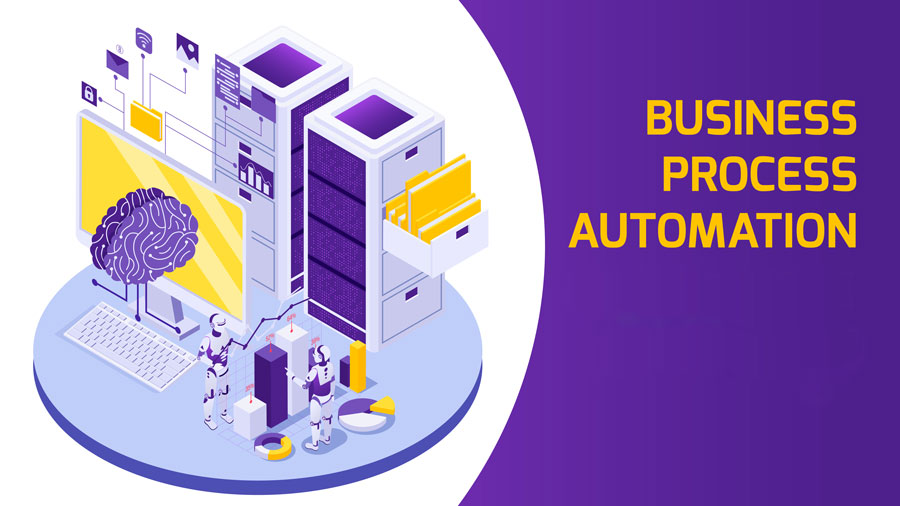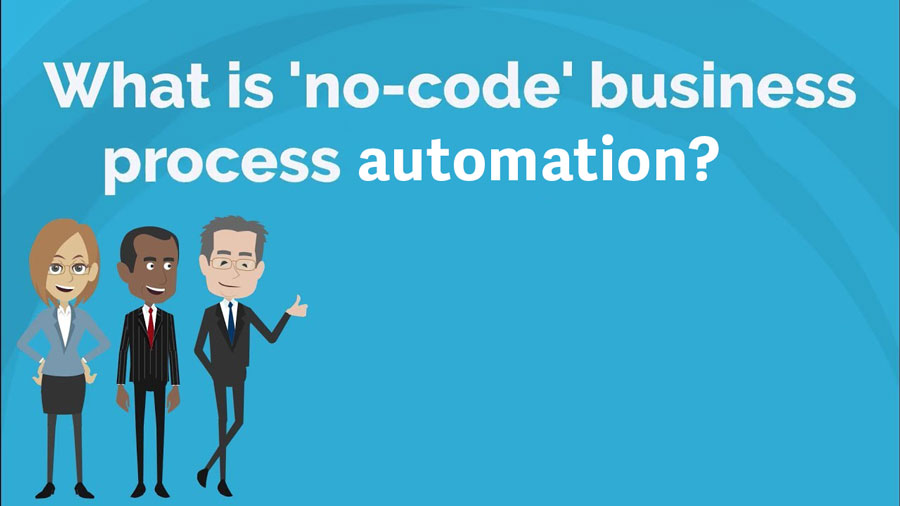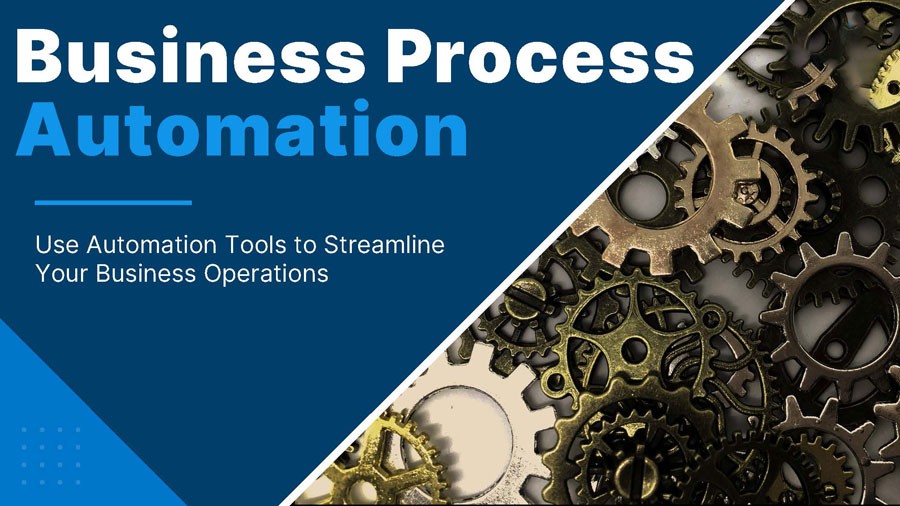Are you tired of spending long hours on repetitive tasks that take your focus away from more important aspects of your business? If so, it’s time to get to know Business Process Automation (BPA) completely.
What is Business Process?
A business process is a complex and sophisticated process that combines diverse steps and tasks to produce a specific result or achieve a defined goal. An accurate description of a business process includes not only the tasks to be performed, but also the people, systems, and information elements on which the process relies.
There are many different types of business processes, from the most important core processes to support processes and long-running processes. Each of these types of processes plays an extremely important role in business operations and can be optimized and automated to achieve maximum efficiency in business processes with harmony between strategy and software. suitable soft. This also shows the complexity and flexibility of business processes, where human, technology and information elements are combined to create a coherent and efficient operating system.
What Is Business Process Automation?
Business Process Automation (BPA) is the utilization of technology and software to automate a chain of business activities with minimal human assistance. It involves the use of software applications, artificial intelligence, and robotic process automation (RPA) to streamline repetitive tasks, reduce operational costs, and improve efficiency.

Difference between BPA and RPA
Business process automation is sometimes confused with robotic process automation, but there are actually important differences between the two tools.
RPA (Robotic Process Automation) refers to the use of programming code or bots to perform specific actions at the keypress level. Each bot is designed with a specific task in mind, often in a way that mimics human activity. For example, a bot can be programmed to log into the system, copy data, and then paste it into a spreadsheet or fill out a form in another application.
BPA (Business Process Automation) differs from RPA in several key ways:
- BPA is designed with the goal of end-to-end process optimization, instead of RPA focusing on individual tasks.
- BPA software uses a low-code framework to minimize the amount of coding needed to optimize or automate processes. In fact, low-code BPA provides an intuitive user interface that eliminates the need for coding for all end users.
- BPA offers a wide range of capabilities not available in RPA. These include features that support process modeling, enhance collaboration, and provide data and insights into process performance.
The simplest way to tell the difference between RPA and BPA is to evaluate the scope of the automation process. If the automation is disaggregated and specific, it can be an example of RPA. Conversely, if automation affects multiple steps in a process, it could be BPA.
When Should You Consider Implementing?
In today’s fast-paced business environment, identifying opportunities for process automation can be crucial for maintaining competitiveness and efficiency. Here are some of the most prominent signs:
High Volume of Tasks
When a business is inundated with a high volume of repetitive tasks, such as data entry, invoice processing, or customer inquiries, it is less efficient to only depend on manual labor. Automating these tasks can significantly reduce processing time and free valuable human resources for more strategic activities.
Required many human resources
If certain tasks require the involvement of multiple employees to complete, it can indicate inefficiencies in the workflow. Automation can streamline these processes, enabling a single automated system to handle tasks that require coordination among multiple individuals.
Restricted time
Time-sensitive tasks, such as order processing, inventory management, or responding to customer inquiries, require swift and accurate execution to maintain customer satisfaction and meet deadlines. Automation ensures that these tasks are completed promptly and consistently, reducing the risk of delays or errors.
Multiple Different Processes and Systems
Some tasks within a business workflow may affect other processes or systems. Automating these tasks ensures consistency and accuracy, minimizing the risk of disruptions or errors cascading through the entire system.
Process Compliance requirements
Compliance requirements are essential for industries. Automating processes ensures that every step is documented and traceable, facilitating compliance with regulatory standards and providing a comprehensive audit trail for accountability.
Advantages of BPA
- Automating manual tasks saves time, eliminating the need for linear, error-prone human activities and allowing you and your team to focus on tasks that truly enhance your company’s value and productivity.
- Providing enhanced transparency, business process automation offers clear logs for each task, showcasing time and who performed it, fostering transparency within the system.
- Ensuring consistent quality, automation guarantees that tasks are executed uniformly, maintaining high-quality performance across operations and boosting customer satisfaction and competitive advantage.
- Optimizing task performance and minimizing errors, automation enhances operational efficiency by reducing time, effort, and costs, ensuring smooth operations and continuous improvement.
- Streamlining processes and eliminating redundancies, workflow automation improves information flow across departments, leading to quicker turnaround times.
- Minimizing resource usage by efficiently handling tasks, automation reduces overall operational expenses.
- Enabling more accurate forecasts and projections, automation allows businesses to gather valuable data on processes and outcomes for informed decision-making.
- Eliminating human error and providing a digital trail of business processes, automation enhances accountability and transparency across all levels.
- Providing reliable, consistent services such as real-time tracking, and automation leads to increased satisfaction and loyalty among customers.
- Freeing up employees’ time for more meaningful work, automation fosters creativity and innovation, thus improving overall morale and productivity.
Challenges of business process automation
Despite all the remarkable benefits of BPA, not every process is considered a perfect candidate for automation. BPA is primarily suitable for tasks that are high volume, frequent, time-sensitive, and involve many individuals. Additionally, because automation is not just a one-time task but an ongoing process, businesses need to periodically review changes in management requirements, regulations, security, and other factors. others to ensure the effectiveness of automated processes.
There are significant challenges that businesses can face when implementing BPA:
- Difficulty in scaling: A business can apply BPA to a specific task or group of tasks. However, expanding the BPA to fulfill other goals in the future may be difficult and require careful consideration.
- Synchronization: When automation systems and bots share work with humans, training humans to work with automation tools and providing them with the necessary information to operate effectively can be difficult.
- Overcoming barriers in the path: Typically, BPA tools are used to speed up processes without considering potential disruptions that could hinder or halt BPA operations.
- Lack of adequate documentation: BPA tools need to be applied with clearly documented step-by-step processes. Businesses lacking adequate documentation will have to overcome this hurdle before implementing BPA.
Mistakes to avoid when automating business processes
Consider automation as the only solution
Automation is the best long-term option for business processes, but leaders can’t just use it to cover up gaps in an ill-designed process. It is necessary to evaluate the benefits and drawbacks of automation versus system replacement, as well as research an integration strategy.
Not spending enough time testing
Automation technologies only work when they have precise algorithms and rules. If programmed incorrectly, they can quickly corrupt business data, while not delivering the necessary efficiency.
Wasted effort on complex processes
Sometimes, businesses will find themselves bogged down when automating processes. This often happens when processes are unclear, inconsistent, or there are too many factors influencing decision making. Don’t waste time and effort with such processes.
Using the wrong metrics to measure success
Applications and technology tools need to be measured to ensure that they are performing well. However, those indicators will not tell whether the project is successful or not.
Focus on measuring KPIs that specifically quantify business results coming from implementing business process automation.
Ignore corporate culture and employees
Equally important in implementing automation is to consider its impact on employees, especially if their roles will be eliminated or changed. Anticipate how employees might react to proactively organize effective internal communications.
Examples
Business process automation offers numerous benefits across various functional areas, ranging from HR and procurement to marketing and finance. By leveraging automation technologies, organizations can streamline their operations, enhance efficiency, and drive competitive advantage in today’s digital economy. Here are some key areas where business process automation can make a significant impact:
Employee Onboarding
Automating the employee onboarding process can greatly improve efficiency and ensure a seamless experience for new hires. This includes automating tasks such as paperwork completion, document verification, training module assignments, and IT setup. By automating these processes, organizations can accelerate the time-to-productivity for new employees and free up HR personnel to focus on more strategic tasks.
Purchase Orders
Automating the purchase order process can streamline procurement operations, reduce paperwork, and minimize errors. With automation, businesses can generate purchase orders automatically based on predefined triggers such as inventory levels or sales forecasts. Automated approval workflows can also expedite the approval process, ensuring timely procurement and delivery of goods and services.
Customer Onboarding
Automating the customer onboarding process is essential for delivering a seamless experience and fostering customer satisfaction. This involves automating tasks such as account setup, welcome emails, introductory tutorials, and personalized onboarding journeys. By automating these processes, organizations can onboard customers more efficiently, reduce churn, and drive long-term loyalty.
Marketing and Sales

Automation plays a crucial role in marketing and sales by streamlining lead generation, nurturing, and conversion processes. Automated marketing platforms can segment leads, send personalized communications, and track customer interactions across multiple channels. In sales, automation tools can automate repetitive tasks such as data entry, lead scoring, and follow-up emails, enabling sales teams to focus on high-value activities.
Accounting and Finance
Automating accounting and finance processes can improve accuracy, compliance, and financial visibility. This includes automating tasks such as invoice processing, expense management, reconciliation, and financial reporting. By automating these processes, organizations can reduce the risk of errors, accelerate financial close cycles, and gain real-time insights into their financial performance.
Data entry
Automating data entry tasks can eliminate manual errors, improve data accuracy, and enhance productivity. This involves leveraging technologies such as optical character recognition (OCR) and robotic process automation (RPA) to automate data capture and entry from various sources. By automating data entry, organizations can free up valuable resources and ensure that data is consistently accurate and up-to-date.
Management
Tasks such as performance tracking, project management, and employee scheduling. Automating management processes can improve decision-making, agility, and organizational effectiveness. Automated dashboards and reports can provide businesses with real-time insights into key performance metrics, enabling them to make data-driven decisions and optimize resource allocation.
Best Practices
To successfully implement Business Process Automation (BPA), it’s crucial to adhere to a set of best practices that ensure efficiency, effectiveness, and seamless integration within the organization. Here are the key steps involved in implementing BPA.
Identify Processes for Improvement: Begin by identifying the business processes that are prime candidates for automation. Identify goals, limits, and others that businesses take care of.
Define Process Steps: Businesses must meticulously define the steps involved in each identified process. This includes clarifying what tasks need to be performed, who is responsible for each task, and the timeline for execution.
Analysis and Design: Once the process steps are defined, conduct a thorough analysis to identify areas for improvement and design the automated workflow. This may involve simplifying complex tasks, optimizing sequences, and identifying integration points with existing systems.
Testing, and Development: Develop prototypes of the automated processes and conduct rigorous testing to ensure functionality, reliability, and user-friendliness. Iterate on the design based on feedback from stakeholders and fine-tune the automation workflows as needed.
Training: Invest adequate time in training employees who will be working with the automation tools. Provide comprehensive training sessions to familiarize users with the new processes, tools, and interfaces.
Deployment: Deploy the automated processes across the organization, ensuring smooth integration with existing systems and workflows. Communicate effectively with employees about the rollout plan, address any concerns, and provide support as needed during the transition period.
Monitoring, Maintenance, and Improvement: Establish mechanisms for monitoring the performance of automated processes and addressing any issues that may arise. Implement regular maintenance routines to ensure the continued efficiency and reliability of the automation solutions. Continuously gather feedback from users and stakeholders to identify areas for improvement and optimization.
Analysis and Measurement of Results: Finally, analyze the results of the automation initiative to measure its impact on key performance metrics such as productivity, cost savings, and customer satisfaction. Use data-driven insights to refine the automated processes further and drive continuous improvement.
Experience Business Process Automation with RPA CLOUD
Are you ready to optimum your workflow? RPA CLOUD is a cloud-based RPA platform that can streamline business process automation for your enterprise with minimal to no coding. We are here to assist your organization in streamlining your tasks, boosting efficiency, and elevating your overall productivity.
Explore more about How to Automate Tasks (Without Coding) here today!







